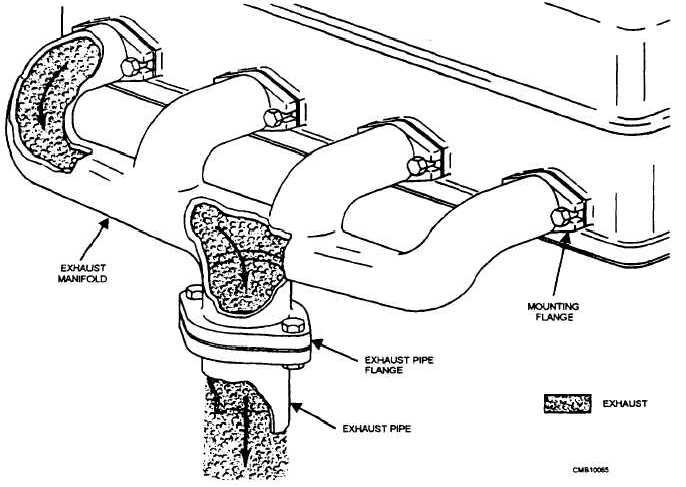Exhaust Manifold
The exhaust manifold (fig. 3-14) connects all of the engine cylinders to the rest of the exhaust system. On L-head engines, the exhaust manifold bolts to the side of the engine block; and on overhead-valve engines, it bolts to the side of the cylinder head. It is usually made of cast iron, either singly or in sections. If the exhaust manifold is made properly, it can create a scavenging action that causes all of the cylinders to help each other get rid of the gases. Back pressure (the force that the pistons must exert to push out the exhaust gases) can be reduced by making the manifold with smooth walls and without sharp bends. Exhaust manifolds on vehicles today are constantly changing in design to allow the use of various types of emission controls. Each of these factors is taken into consideration when the exhaust manifold is designed, and the best possible manifold is manufactured to fit into the confines of the engine compartment.
Intake Manifold The intake manifold on a gasoline engine carries the air-fuel mixture from the carburetor and distributes it to the cylinders. On a diesel engine, the manifold carries only air into the cylinders. The gasoline engine intake manifold (fig. 3-15) is designed with the following functions in mind:
Deliver the air-fuel mixture to the cylinders in equal quantities and proportions. This is important for smooth engine performance. The lengths of the passages should be near to equal as possible to distribute the air-fuel mixture equally.
Help to keep the vaporized air-fuel mixture from condensing before it reaches the combustion chamber. The ideal air-fuel mixture should be vaporized completely, as it enters the combustion chamber. This is very important. The manifold passages are designed with smooth

Figure 3-14. - Exhaust manifold.
Continue Reading